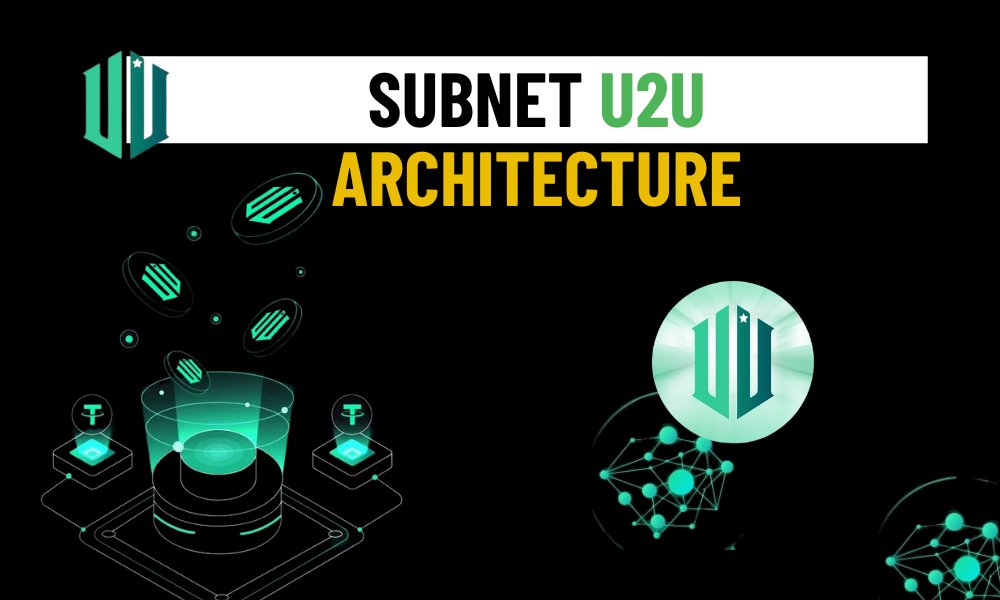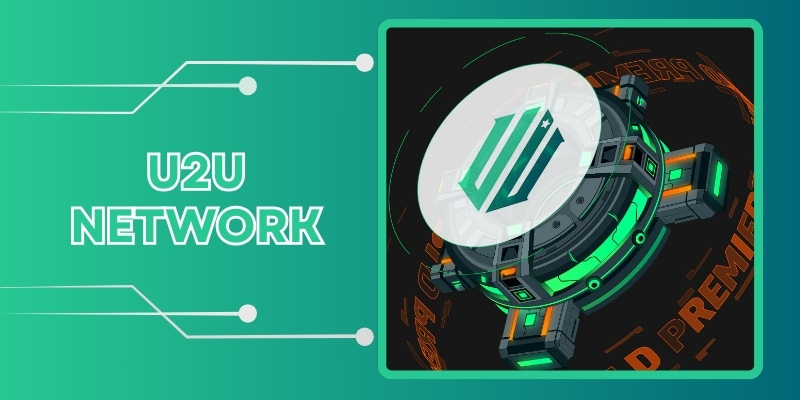The Subnet U2U Architecture, a cornerstone of the Unicorn Ultra (U2U) Network, is redefining how Layer-1 blockchains address these challenges. Designed for Decentralized Physical Infrastructure Networks (DePIN), the Subnet U2U Architecture offers a modular, high-performance solution that empowers developers and businesses alike. This article explores the technical intricacies, benefits, and real-world applications of the Subnet U2U Architecture, providing a comprehensive guide for blockchain enthusiasts, developers, and investors.
What is the Subnet U2U Architecture?
The Subnet U2U Architecture is a modular Layer-2 framework built on top of the U2U Chain, a Directed Acyclic Graph (DAG)-based Layer-1 blockchain. Subnets are independent subnetworks that operate as specialized chains, each tailored to specific use cases such as decentralized VPNs (U2DPN), gaming infrastructure (Layer G), or IoT applications. By distributing workloads across multiple subnets, the Subnet U2U Architecture achieves infinite scalability while inheriting the security and consensus mechanisms of the U2U Chain.
Key Features of the Subnet U2U Architecture
-
Modularity: Subnets are customizable, allowing developers to optimize performance for specific applications.
-
Scalability: Each subnet processes transactions independently, enabling the network to handle up to 500,000 transactions per second (TPS) with sharding.
-
Interoperability: The Universal Message Verification (UMV) protocol ensures seamless communication between subnets and the U2U Chain.
-
Security: Trusted Execution Environments (TEE) and Fully Homomorphic Encryption (FHE) safeguard data integrity and privacy.
-
EVM Compatibility: Developers can build Ethereum-compatible decentralized applications (dApps) using familiar tools.

How Does the Subnet U2U Architecture Work?
The Subnet U2U Architecture is a sophisticated system that integrates several components to deliver high throughput, low latency, and robust security. Below is a breakdown of its core elements:
1. U2U Chain: The Foundation
The U2U Chain serves as the Layer-1 settlement layer, leveraging DAG technology and the Helios Consensus Protocol (a combination of Asynchronous Byzantine Fault Tolerance and Delegated Proof of Stake). It processes up to 72,000 TPS with a finality time of under 650 milliseconds, acting as the backbone for all subnets.
2. Subnets: Specialized Layer-2 Networks
Subnets are independent networks of peer-to-peer nodes running the Ostracism Virtual Machine (OVM). Each subnet is optimized for specific tasks, reducing mainnet congestion and enhancing performance. For example:
-
U2DPN Subnet: Powers decentralized VPNs by transforming devices into network nodes.
-
Layer G Subnet: Supports Web3 gaming with features like matchmaking and leaderboards.
Subnets operate autonomously, ensuring resilience even if the mainnet experiences downtime.
3. Node Types
The Subnet U2U Architecture relies on three node types:
-
Master Nodes: Manage transactions, data availability, and cross-network operations, earning rewards from fees and proof mechanisms.
-
Verifier Nodes: Use TEE and FHE to validate data, ensuring privacy and integrity.
-
Edge Nodes: Contribute computational resources (CPU, GPU, storage) and are rewarded based on their contributions.
4. Universal Message Verification (UMV)
UMV is a lightweight protocol that enables constant communication between subnets and the U2U Chain. This ensures interoperability, allowing dApps on different subnets to interact seamlessly.
5. Helios Consensus and Multi-Sharding
The Helios Consensus combines aBFT and DPoS, achieving high throughput and security. Multi-sharding divides validators into clusters, with each shard processing 17,000 TPS. This parallelized approach is critical to the Subnet U2U Architecture’s scalability.
Why the Subnet U2U Architecture Matters
The Subnet U2U Architecture addresses the blockchain scalability trilemma—balancing decentralization, security, and scalability—while offering unique advantages:
1. Unparalleled Scalability
By distributing workloads across subnets, the U2U Network achieves horizontal scaling. Stress tests have demonstrated up to 500,000 TPS, making it one of the most scalable Layer-1 solutions available.
2. Customization for DePIN
The Subnet U2U Architecture is tailored for DePIN applications, enabling decentralized solutions for real-world problems like internet access, gaming, and IoT. Developers can create subnets with specific configurations, optimizing performance and user experience.
3. Cost Efficiency
Subnets reduce reliance on the mainnet, lowering transaction costs for dApps. This makes the U2U Network attractive for developers building high-throughput applications.
4. Energy Efficiency
The DAG-based structure consumes less energy than traditional blockchains, aligning with the growing demand for sustainable blockchain solutions.
5. Resilience and Security
Subnets operate independently, ensuring network stability. TEE and FHE enhance data privacy, making the Subnet U2U Architecture ideal for sensitive applications like decentralized identity and data storage.

Real-World Applications of the Subnet U2U Architecture
The Subnet U2U Architecture powers a growing ecosystem of DePIN applications:
-
U2DPN: A decentralized VPN solution that democratizes internet access by leveraging edge nodes.
-
Layer G: A gaming-focused subnet that simplifies Web3 game development with built-in features.
-
IoT and AI: Subnets support decentralized IoT and AI applications by utilizing edge node resources.
-
Data Storage and Decentralized ID: Dedicated subnets optimize secure data management and identity solutions.
As of October 2024, the U2U Network supports nearly 100 dApps, with over 180,000 wallet addresses and 155,000+ U2DPN downloads.
Developer Tools and Ecosystem Support
The Subnet U2U Architecture is developer-friendly, offering:
-
Subnet SDK: Simplifies subnet creation with tools for node structures and DePIN integration.
-
U2U Super App: A user-friendly platform for interacting with dApps and managing assets.
-
DePIN Alliance: Fosters collaboration and onboarding of new projects.
-
Hardware Infrastructure: Supports over 1 million mobile devices and 30,000+ GPUs/CPUs.
Challenges and Future Outlook
While the Subnet U2U Architecture is innovative, challenges remain:
-
Complexity: Managing multiple subnets requires developer expertise.
-
Adoption: Widespread adoption of DePIN applications depends on user and node operator participation.
-
Competition: U2U competes with established Layer-1s like Avalanche and Polkadot.
Looking ahead, U2U Network plans to expand its ecosystem by launching a Client Application Hub, releasing advanced SDKs, and incubating new DePIN projects. Partnerships with Hivello and CoinList will further drive growth.
The Subnet U2U Architecture is a game-changer for blockchain scalability and DePIN innovation. By combining a modular subnet model with DAG technology, the Helios Consensus, and robust security features, U2U Network delivers a scalable, secure, and developer-friendly platform. Whether you’re a developer building the next generation of dApps or an investor exploring high-potential blockchain projects, the Subnet U2U Architecture is worth watching.
For more information, visit u2u.xyz or explore U2U’s technical documentation on Medium.
